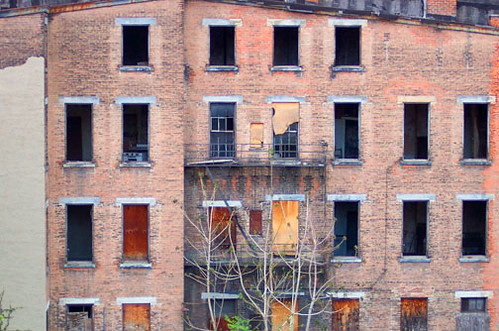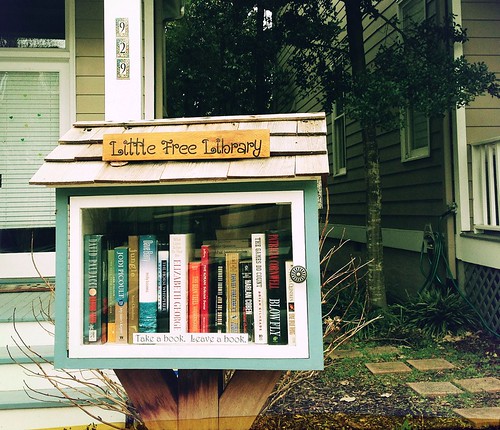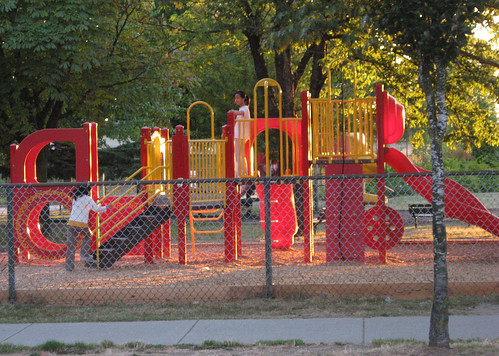City sustainability is about the environment, even when it isn't

Posted September 25, 2013 at 1:28PM
I teach a law school seminar in regional and community sustainability and, in each of the last two weeks, a student has wondered why I was including in our curriculum subjects such as home affordability and cultural preservation. “What does this have to do with sustainability?” he asked. He wasn’t being obnoxious, just curious.
And my answer, then and now, is this: just about everything.
In order to have any chance at environmental sustainability, we need strong cities and walkable suburbs. They enable living patterns that save energy, reduce automobile dependence and tailpipe emissions, slow the spread of pavement across watersheds, and conserve land, compared to spread-out suburbs. But, for cities to serve this function, they need to work for people. And I mean people of all sorts in an increasingly diversifying population, not just creative-class MIllennials with no school-age kids and well-to-do Baby Boomers moving back downtown.
Unfortunately, for many decades inner cities didn’t work very well for people with choices about where to live. As a result, entire neighborhoods were abandoned as people moved out to (for a brief time, literally) greener pastures. Or so they believed. The resulting disinvestment of our inner cities was a tragedy from which we as a nation have yet to recover fully. Even in my city of Washington, DC, thought to be booming, we’re only at about four-fifths of our peak population in the 1950s.  Disinvestment would have been a tragedy even without the accompanying sprawl, which has caused so much environmental damage. We have yet to recover from that, too.
Disinvestment would have been a tragedy even without the accompanying sprawl, which has caused so much environmental damage. We have yet to recover from that, too.
Sustainability isn’t just about numbers, and it isn’t always explicitly about “the environment,” by which most of us mean issues related to pollution and resource consumption. If our urban solutions don’t work for people – if we don’t make cities wonderful places to live, work, and play – they will never sustain enough favor to work for the planet.
This is why perceptions about crime – although inner cities are much safer now than, say, twenty years ago, reputations persist – are an environmental issue. This is why urban public schools are an environmental issue. Affordability, too: cities need schoolteachers, public safety officers and mechanics every bit as much as lawyers and doctors. [Insert lawyer joke here; I can take it.]
And this is why, while most of my colleagues in the environmental community concentrate their efforts on regulation of pollution, standards for carbon emissions, protection of rural land from excessive resource extraction, and the like – and, trust me, we are better off for their efforts – I remain steadfast in my promotion of thoughtful placemaking, of places of peaceful respite amidst urban density, of such “mushy” concerns as lovable buildings and legacy. Because we need cities to be attractive and strong, these are all environmental issues.
Earlier this week I wrote about (Park)ing Day, when citizens take over metered parking spaces for a day and convert them into miniature public spaces. Park(ing) Day doesn’t do much directly for the environment, in my opinion: someone sitting in a kayak on a faux river where a parking space normally exists is frivolous, even silly, as is someone plopped down lengthwise on a few feet of artificial turf in a parking space. (Some Park(ing) Day exhibits are more explicitly environmental.) But that doesn’t matter to me. These little projects animate the street and engage the citizenry in their cities. That helps make cities more fun and enjoyable.
More earnest, perhaps, is the wonderful effort of former mayor Rick Baker to put a playground within a half-mile of every child in St. Petersburg, Florida. Playgrounds don’t do anything directly to reduce pollution or resource consumption, either. But they make cities more attractive and viable for kids and their parents. And that is a very big deal indeed for reviving cities as places for families to live.
Which brings me to a budding community-building effort that is as brilliant in its simplicity as in its appeal: free, informal sidewalk libraries. The idea is to create an accessible public spot, stock it with used books, and allow people to take them and leave books for others. I first heard of the idea last year when researching a story about an innovative bus stop in Paris.
It’s a practice that is catching on, writes Robert Samuels in The Washington Post. Samuels describes a sort of oversized mailbox with a glass door outside Philip Vahab’s home in DC:
“The box is stuffed with paperbacks from Dean Koontz and Don DeLillo, free for the taking. Borrowers can return them — if they want — or trade them for a different book. At first blush, it might seem quaint. But the book house is a part of a burgeoning global literary movement just now taking root in the region.
“The ‘Little Free Library’ concept started four years ago in the Midwest, when an entrepreneur named Todd Bol watched his neighbors gobble up books placed outside his home. Back then, he dreamed that 2,500 similar libraries would be constructed by 2014. He was naive. There are already more than 10,000.
“Those who have used the book houses say they offer simple joys: the thrill of an unexpected find, the abandonment of Dewey-Decimal stodginess and — most of all — the creation of a new community space.”
I began today’s article with the idea of writing only about the little free libraries – what a great idea – but then realized there was a larger issue behind it: Making cities better is good for the environment. Even (maybe especially) when it isn’t obviously so. As much as anything, that’s what this blog is about.
Related posts:
- New round of arts grants help revitalize and animate city neighborhoods (May 20, 2013)
- Urban revitalization is green. Let's make it greener, greater, and more inclusive. (August 10, 2011)
- Libraries as green community and neighborhood anchors (January 31, 2011)
- “If you don’t have safe streets, all the light rail lines in the world aren’t going to save your city” (November 30, 2009)
- Urban education: the next environmental and smart growth frontier (November 16, 2009)
Move your cursor over the images for credit information.

